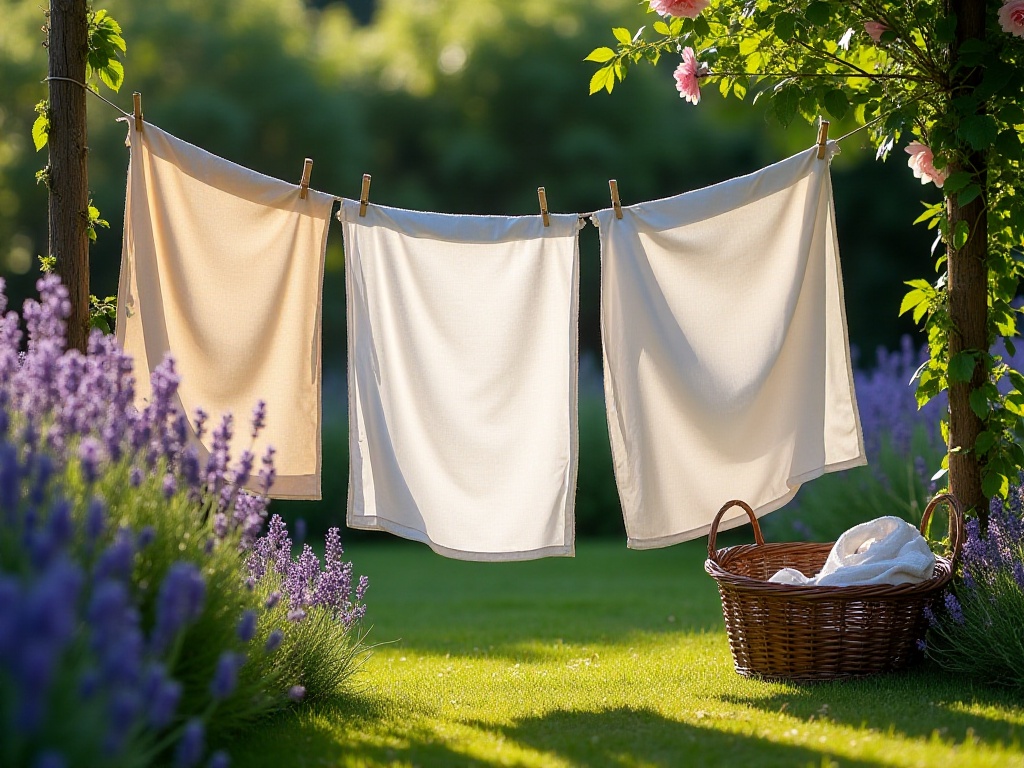Introduction
As a young professional, it's always painful to see expensive clothes ruined due to improper care. Shrunken sweaters, deformed T-shirts, pilling coats... these are all common issues we face. Don't worry though - after years of research and practice, I've mastered a complete set of clothing care methods that I'll share with you today.
These methods are not only easy to learn but also very cost-effective. Think about it - if you can make a $300 piece of clothing last one more year, that's like saving $25 per month. If you have 20 such pieces, you could save $6,000 in a year! That's quite a significant amount!
The Laundry Revolution
To be honest, before researching clothing care, I was the type who would "throw everything in the washing machine when it got dirty." Until one time, my favorite limited edition UNIQLO hoodie was "destroyed" - the whole garment not only faded but also pilled badly. That piece was so hard to get! Later, after extensive research, I discovered that my washing method was completely wrong.
Data from textile research institutions shocked me: over 60% of clothing damage is due to improper washing methods. It's like buying the latest iPhone but using it to crack nuts every day - of course it'll break down quickly! So, scientific washing methods are really crucial.
First, we need to change the mindset of "wash after every wear." Unless you're doing intense outdoor activities all day, many clothes don't need to be washed after each wear. For instance, work shirts, if worn with an undershirt and you haven't sweated much that day, can be worn 1-2 more times. This not only saves detergent and utilities but more importantly extends the life of your clothes.
The second issue is sorting laundry. Different materials should be washed separately - many people know this, but might not know exactly how to sort. I've summarized a simple sorting method:
White cotton items can be washed together as they can handle higher water temperatures and stronger mechanical action; dark clothes should be washed separately as they tend to bleed; delicate fabrics like wool and silk are best hand-washed or using special care programs.
The choice of washing machine is also crucial. Today's washing machines have increasingly more functions, but the most important aspects are water flow design and spin speed. After using many washing machines, I've found that front-loading machines indeed cause less damage to clothes than top-loading ones, especially for delicate fabrics.
Regarding detergents, here's an important point: more expensive doesn't necessarily mean better. The key is choosing based on fabric type and soil level. Regular cotton clothes are fine with normal detergent; but for wool sweaters or silk items, it's better to use specialized cleaners.
There's also an often overlooked detail: detergent amount. Many people think adding more detergent when clothes are dirty is better, but this is actually wrong. Excess detergent not only doesn't clean clothes better but can remain in fabric fibers, causing clothes to become stiff, yellow, and potentially cause skin allergies.
I've summarized a simple calculation method: for a 5kg capacity washing machine, if it's half full, two capfuls of detergent is enough. If clothes are particularly dirty, use a specialized stain remover for spot treatment rather than simply increasing detergent amount.

The Temperature Mystery
Water temperature is an issue where I've made many mistakes. Initially, I thought hotter water meant cleaner clothes, but ended up ruining several pieces. Later I learned just how significant water temperature's impact on clothing is.
Research shows that washing at temperatures below 30 degrees can reduce fabric wear by 50%. This is because high temperatures damage fiber structure, especially synthetic fibers which easily deform at high temperatures. Moreover, hot water washing accelerates color fading.
I now mostly wash clothes in cold water, especially dark items. However, note that cold water might not remove oil stains - in such cases, pre-treat with a specialized oil remover.
Here's another tip: when washing new clothes for the first time, it's best to use cold water and wash them separately. New clothes often have excess dye that can bleed onto other items if washed together.
Regarding washing temperature, there's a secret many don't know: rinse water should be cooler than wash water. This helps fabric fibers return to their original state and reduces wrinkles.
The Art of Drying
Drying seems simple but has its techniques. Proper drying methods can extend clothing life by 30% - not a small number.
First, different items need different drying methods. Wool sweaters should be dried flat to prevent deformation; jeans should be dried inside out to reduce fading; silk items should avoid direct sunlight and be dried in shaded, ventilated areas.
I've also summarized some practical drying tips. For example, button up shirts before drying to maintain collar shape; gently squeeze rather than wring out sweaters to prevent deformation; knits are best dried on hanger shoulders to maintain shoulder line shape.
Another often overlooked detail is drying location. If possible, choose a ventilated place without direct sunlight. Strong sunlight not only causes fading but accelerates fabric aging. If sun drying is necessary, turn clothes inside out.
Post-wash handling is also crucial. Don't just yank clothes from the washing machine to hang them - this can cause deformation. The correct method is to gently shake clothes out before hanging. This reduces wrinkles and speeds up drying.

Stain Removal Expert
Stain removal is a complex subject. Different stains need different treatments, and timing is crucial. Statistics show that 90% of stubborn stains have double the success rate if treated within 30 minutes.
I recently discovered a great trick: using chalk for oil stains. Just apply chalk powder to the oil stain, wait 15 minutes, then wash normally - works great. This works because chalk's main component, calcium carbonate, absorbs oil.
Besides chalk, many household items can remove stains. For example, white vinegar removes underarm sweat stains; lemon juice removes fruit juice stains; toothpaste removes ink stains, etc.
However, note that different fabrics require different treatment methods. For instance, silk items shouldn't use alkaline cleaners as they damage fibers; wool sweaters shouldn't be treated with hot water as they'll shrink.

Storage Wisdom
Honestly, my closet used to be a "black hole" where clothes were just stuffed in. Until one time, my favorite wool sweater deformed due to improper storage, I realized the importance of proper storage.
Studies show scientific storage methods can extend clothing life by 25%. This data shocked me - storage is that important.
My current storage method involves choosing different hangers for different fabrics. Wool sweaters use wide-shoulder hangers to maintain shoulder shape; shirts use wooden hangers as wood absorbs moisture; suits need specialized suit hangers to maintain shoulder line shape.
Consider seasonality when storing. I store less frequently worn seasonal items in special storage bags. Choose breathable bags to prevent mold.
An important detail: ensure clothes are completely dry before storage. Storing damp clothes can lead to mold and odors.

Steam Care
Lastly, let's discuss steam care. I recently started using this method with great results. Compared to traditional ironing, steam care reduces clothing damage by 80%.
I now steam almost all my clothes, especially wrinkle-prone items like shirts and dresses. Steam not only removes wrinkles but also odors, while causing minimal damage.
There are some precautions when using steam care. For instance, steam temperature shouldn't be too high, maintain appropriate distance from fabric, and steam in the direction of fibers.

Conclusion
Through years of practice, I've deeply realized: clothing care is a race against time. With correct methods, we can maintain clothes' new condition longer.
This not only saves money but more importantly makes our wardrobes more environmentally friendly. Think about it - if everyone's clothes lasted one more year, how much global textile waste would be reduced!
So, let's become smart fashion experts together! Proper clothing care not only makes your clothes last longer but keeps your wallet fuller! Remember, quality clothing care isn't just a habit, it's a lifestyle attitude.
Related articles




